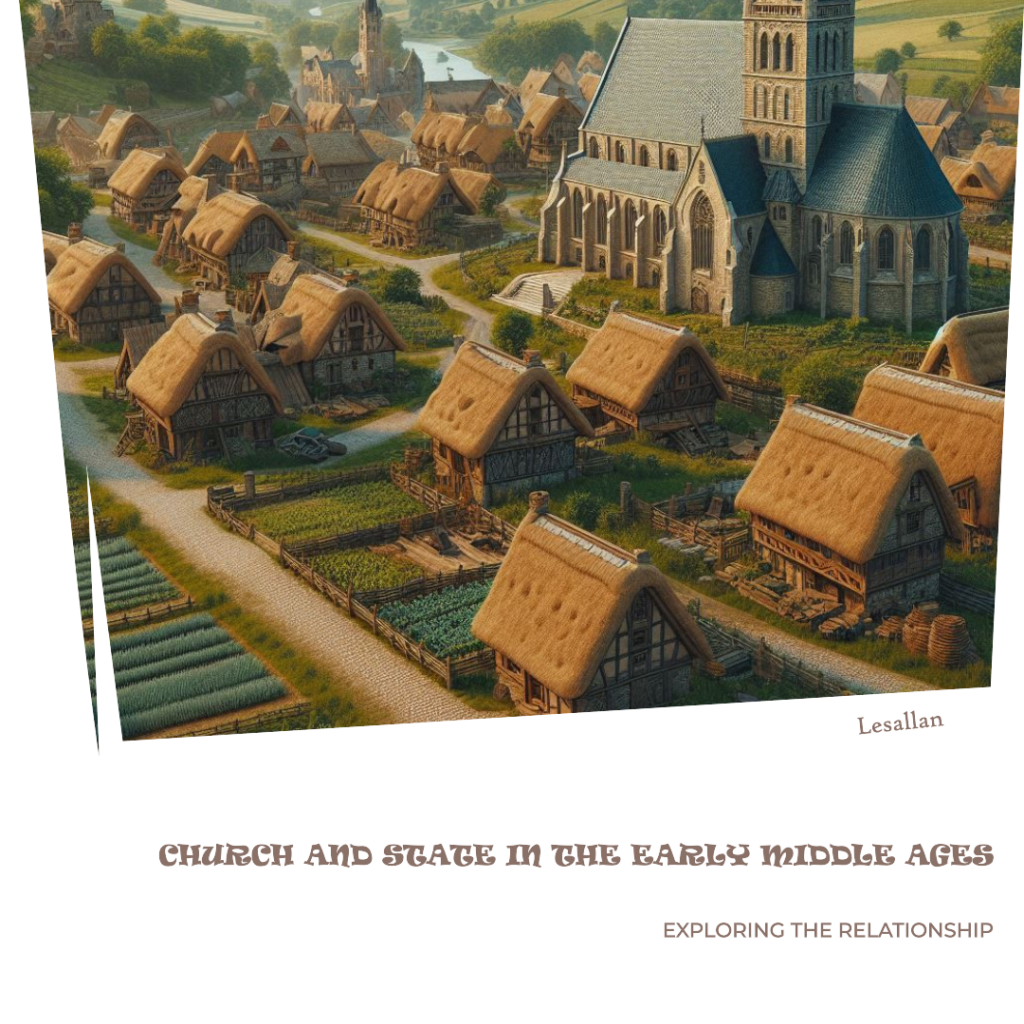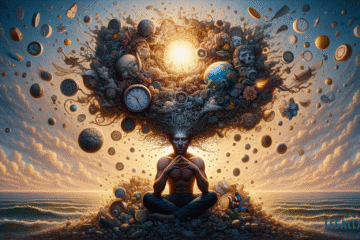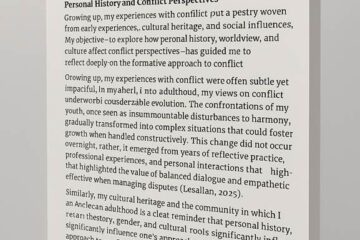June 18, 2024

Early Middle Ages – Church and State
During the period referred to as the Early Middle Ages, there were notable transformations and upheavals from the 5th to the 10th century. The decline of the Western Roman Empire created a power vacuum that the Catholic Church gradually occupied, giving rise to an intricate and occasionally tumultuous relationship between church and state. This essay delves into the interactions between church and state, how individuals pursued their vocations, and the significance of these historical dynamics in contemporary culture.
The church and state often maintained a symbiotic relationship in the Early Middle Ages. Secular rulers sought the church’s endorsement to legitimize their authority, while the church depended on secular power to protect and enforce its decrees. An illustrative instance of this interdependence is the coronation of Charlemagne by Pope Leo III in 800 AD, symbolizing the close bond between the Frankish kingdom and the papacy (Shelley, 2021, p. 202).
One of the most significant conflicts in history, the Investiture Controversy, was a dramatic confrontation between the church and the state over the appointment of bishops. This dispute vividly highlighted the struggle between the independence of the church and the control of secular authorities. The Concordat of Worms in 1122 resolved this conflict by clearly delineating the powers of the church and the emperor in the appointment of bishops (Shelley, 2021, p. 234).
Throughout history, the church became more intertwined with political affairs, as bishops and abbots frequently wielded substantial secular authority. The church’s extensive land holdings and its involvement in education and administration significantly influenced this. For instance, the church’s management of vast estates and contribution to the Carolingian Renaissance highlighted its political sway (Shelley, 2021, p. 210).
The church, as the moral authority, frequently involved itself in political affairs to advise rulers in alignment with Christian values. This moral influence often led to disputes with rulers who opposed interference from the church. The clash between Pope Gregory VII’s reforms and Emperor Henry IV serves as a prime example of this interaction (Shelley, 2021, p. 228).
Frustrated by the disorder and dishonesty of secular life, numerous people sought solace in monasticism. Monasteries emerged as hubs of education, devotion, and assistance, providing a sanctuary from the uncertainty of the external world. The Benedictine Rule, instituted by St. Benedict of Nursia, introduced an organized way of life focused on communal living, prayer, and work (Shelley, 2021, p. 180).
The allure of spiritual purity and a deeper connection with God captivated many individuals drawn to the monastic way of life. For instance, the Rule of St. Benedict offered a disciplined lifestyle centered on prayer, labor, and communal existence. This monastic aspiration appealed to those seeking refuge from the moral decline prevalent in secular society (Shelley, 2021, p. 182).
Specific individuals held secular and ecclesiastical positions, such as bishops acting as political advisors or rulers. This dual role often led to their involvement in conflicts between the church and the state. For example, Bishop Ambrose of Milan famously challenged Emperor Theodosius, highlighting the intricate relationship between ecclesiastical and secular authority (Shelley, 2021, p. 160).
During the Middle Ages, clergy members, and laypeople aimed to express their faith through acts such as pilgrimages, charitable deeds, and participation in church rituals. The emergence of lay movements and confraternities in the later Middle Ages demonstrates this shift (Shelley, 2021, p. 240).
During the Early Middle Ages, it became evident that establishing clear boundaries between religious and secular authorities was crucial. In modern democracies, the separation of church and state is deeply stressed to avoid conflicts of interest and safeguard religious freedom. Past conflicts, like the Investiture Controversy, are a stark reminder of the risks associated with blurred boundaries (Shelley, 2021, p. 234).
Even though there is a separation of church and state, religious institutions still significantly influence the moral and ethical discourse in society. It remains essential to balance honoring religious viewpoints and upholding secular governance. The church’s longstanding position as a moral authority can offer valuable insights into present-day discussions on ethical leadership (Shelley, 2021, p. 228).
The monastic quest for a harmonious life of prayer and work can inspire modern individuals striving to blend their spiritual and professional lives. Additionally, the emphasis on community and service in monasticism provides important teachings for today’s society. The Rule of St. Benedict’s emphasis on stability, obedience, and communal living remains particularly pertinent (Shelley, 2021, p. 182).
The church’s historical role in guiding rulers can provide insights for current discussions on ethical leadership and the significance of moral values in politics and governance. Although sometimes controversial, the church’s participation in political affairs has often been oriented toward upholding moral principles (Shelley, 2021, p. 210).
Blessings,
Lesallan
References:
Shelley, B. L. (2021). Church history in plain language (5th ed.). Zondervan Academic.
Ohio Christian University
THE2300 Historical Theology I (ONLSP242)


